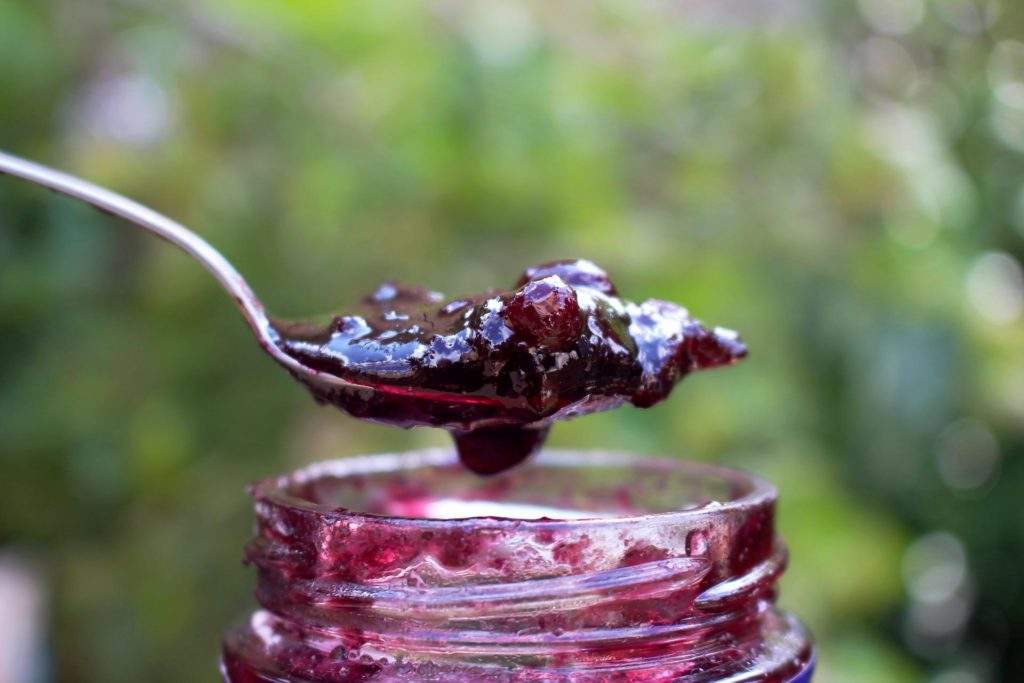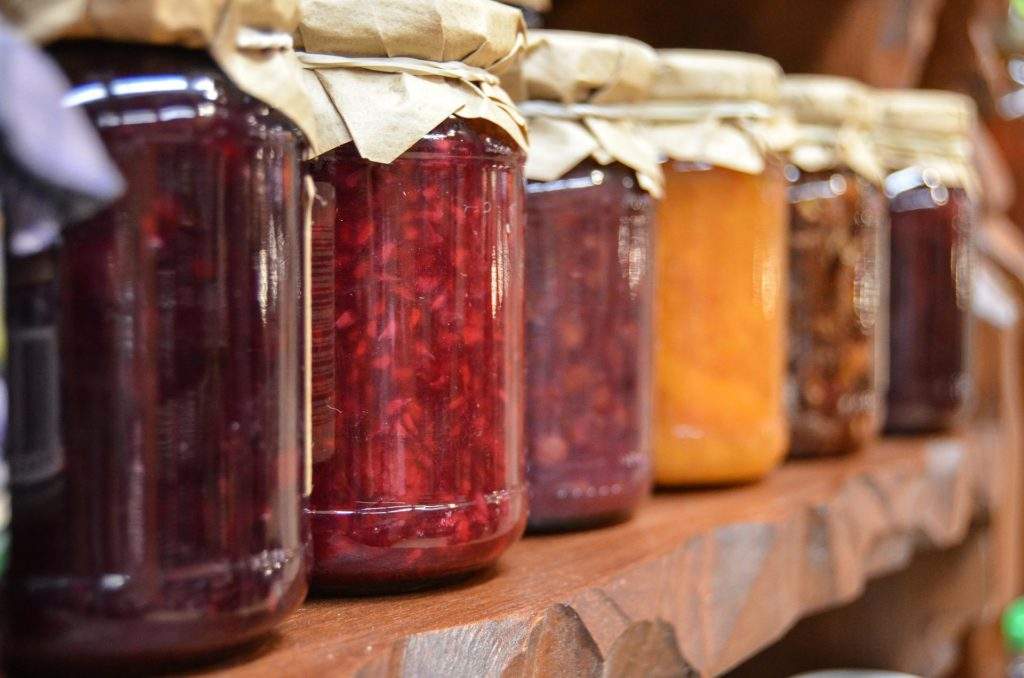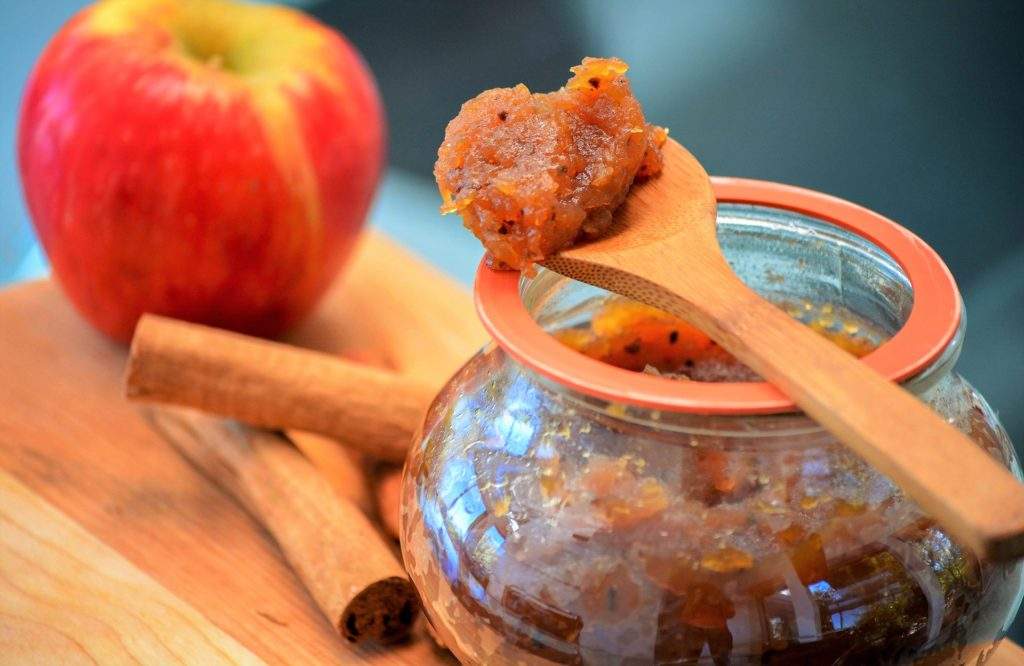Pectins are a group of water-soluble carbohydrate substances found in the cell walls and intercellular tissues of certain plants.
In plant fruits, pectin helps to hold adjacent cell walls together.
Immature fruits contain the precursor substance protopectin, which converts to pectinand becomes more water soluble as ripening progresses.
At this stage, pectin helps the ripening fruits to remain firm and keep their shape.
When the fruit is overripe, the pectin breaks down into simple sugars that are completely soluble in water.
As a result, the overripe fruit softens and begins to lose its shape.

Because of its ability to form a thick gel-like solution, pectin is used commercially in the preparation of jellies, jams and jams.
Its thickening properties also make it useful in the confectionery, pharmaceutical and textile industries.
Pectic substances consist of an associated group of polysaccharides that are extractable with hot water or dilute aqueous acid solutions.
The main sources of commercial pectin are citrus peels and, to a lesser extent, apple pomace (residue from cider presses).
In the presence of fruit acids and sugar, very small quantities of pectin are sufficient to form a gelatin.
These include its ability to reduce low-density lipoprotein (LDL) levels, thereby lowering cholesterol levels, and its ability to slow the passage of food through the intestine, alleviating diarrhea.
Pectins can also activate cell death pathways in cancer cells, indicating that pectins may play an important role in the prevention of certain types of cancer.
Pectin is a natural and commercially essential ingredient in preserves, such as jellies and jams.
Without pectin, jellies and jams do not gel.
Pectin is a type of starch, called heteropolysaccharide, which occurs naturally in the cell walls of fruits and vegetables and gives them structure.
When combined with sugar and acid, it is what causes jams and jellies to develop a semi-solid texture when cooled.

Some fruits, such as apples and quince, and the peels, seeds and membranes of citrus fruits are naturally very rich in pectin.
Commercial pectins are usually made from citrus peels. They are sold as dry powder and in liquid form.
There are two main types of pectin: high methoxyl (HM) and low methoxyl (LM).
High methoxyl (HM) pectin is the most common type and is often labeled as “fast-setting” or “slow-setting”.
Fast-setting HM is best for chunky jams and jellies, while slow-setting HM works well for clear jellies.
Low methoxyl (LM) pectin, which uses calcium instead of sugar to create a set, is good for preserves with little or no sugar.
It is often labeled as “light” or “made for low sugar recipes”.
The two main types of pectin have several varieties, and each behaves differently.
Dried pectin comes in multiple forms, including regular (or classic), fast-setting, and slow-setting (high in methoxyl HM), the sugar-free or low-sugar (low in methoxyl LM), the MCP (modified citrus pectin) – which is similar to low-sugar and sugar-free pectin – and instant or freezer jam pectin.
Since different types of pectin behave differently, it is best to use the version indicated in the recipe you are going to use.
If the jam or jelly is too hard or too soft, you can always adjust the amounts accordingly.

Pectinis used to thicken recipes that include fruits with little pectin.
Some fruits, especially very ripe ones, have relatively little pectin.
Strawberries and raspberries, for example, are easily crushed, demonstrating their low content of the “glue” that helps build the structure of the fruit.
In the case of these fruits, without added pectin, making a well-set jam or jelly may require the addition of too much sugar, excessively long cooking, or both, resulting in a jam or jelly that tastes less like the fruit.
To find out how much pectinthe fruit has, combine one tablespoon of grain alcohol and one teaspoon of juice from the fruit.
If the mixture is firm, it has a high pectin content.
If the mixture becomes a loose, gelatinous mass, it is medium on the pectin scale.
If it does not set at all or forms gel chips, it is low in pectin.
Pectin can also be used in other dishes that require food to gel or thicken and as a fat substitute in some bakery products.

The type of pectin used will determine how it is added to a recipe.
High methoxyl (HM) pectin needs to be cooked at a high temperature (220 F) in combination with acid and sugar to form a gel, while low methoxyl (LM) pectin can be activated at room temperature.
Therefore, HM pectin will be added to the hot fruit mixture at the beginning.
LM pectin is usually mixed with a little sugar and added to the hot fruit later in the recipe.
Be sure not to overcook the recipe once the pectin has been added, as boiling past the gelling point, or not stirring enough, will help break down the pectin.


TÖUFOOD is a complete line of products of exceptional quality, developed by GASTROCULTURA MEDITERRÁNEA SL, which allows the most well-known techniques of modern cuisine to be put into practice. Innovative recipes can be easily realised, bringing excitement and surprise to dishes, offering a stimulating and memorable culinary experience.